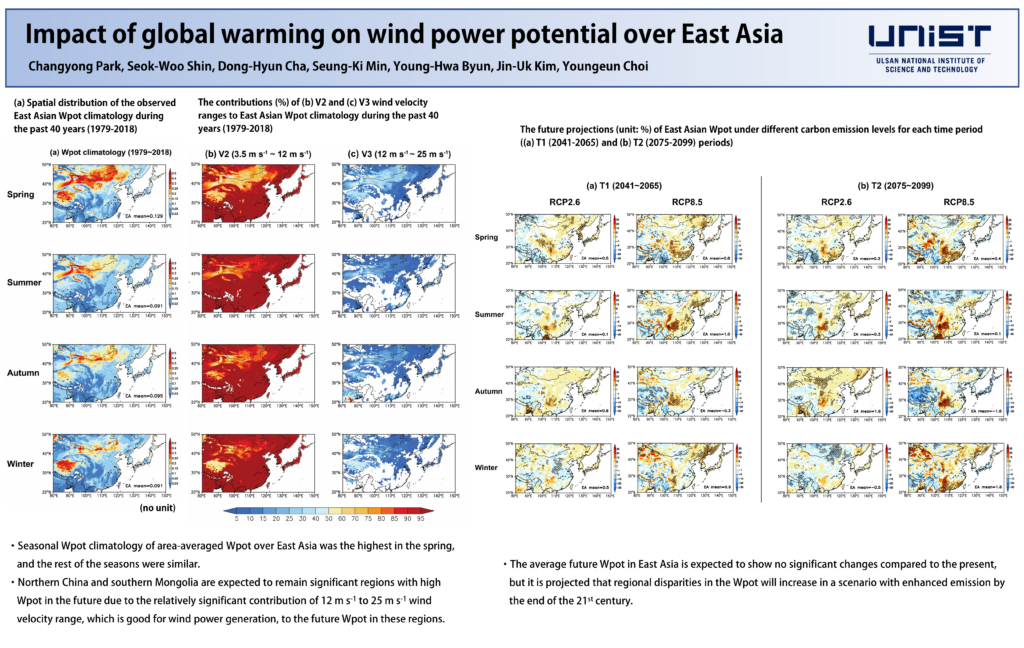Abstract
A recent study has examined the impact of climate warming in East Asia on the future productivity potential of wind power generation.
Led by Professor Dong-Hyun Cha from the Department of Civil, Urban, Earth, and Environmental Engineering at UNIST, the research team published their findings in an international academic journal, highlighting the effects of warming on wind power potential in East Asia through the development of a high-resolution climate model.
The study utilized numerical models alongside the global climate models (GCMs) to create detailed climate projections for East Asia, assessing the wind power potential (Wpot) under various carbon emission scenarios.
Findings indicate that northern China and southern Mongolia emerge as the regions with the highest Wpot climatology within East Asia, primarily due to the relatively significant contribution of 12 m s-1 to 25 m s-1 wind velocity range, which is optimal for wind power generation, to the future Wpot in these regions.
For the Korean Peninsula, Wpot is expected to increase in a scenario with enhanced emissions by the middle of the 21st century, but it is likely to diminish by the end. Notably, if carbon emissions continue to escalate, there are concerns that wind power potential in the autumn months may decline.

Moreover, the study predicts that regional disparities in wind power productivity will widen across East Asia during the second half of the century.
"At a time when major East Asian nations are increasing their reliance on renewable energy sources such as wind power in response to international initiatives like the Paris Agreement and RE100, this research can serve as a policy guide for identifying optimal locations to enhance wind power generation efficiency," said Research Professor Changyong Park, the first author of the study.
This research was conducted as part of the Coordinated Regional Climate Downscaling Experiment (CORDEX) project, which aims to provide future climate information at a regional scale using advanced numerical modeling techniques. CORDEX is managed by the World Climate Research Program (WCRP), under the auspices of the World Meteorological Organization (WMO). UNIST has been an active participant in this project since 2013.
Professor Cha emphasized, "We will continue to advance high-resolution climate models to proactively address climate change across various sectors, including renewable energy."
The findings of this study have been published in the October 2024 issue of Renewable and Sustainable Energy Reviews, a leading journal in the field of green and sustainable technology. This research received support from the Korea Institute of Environmental Research and Extension Services under the Ministry of Environment, as well as the Korea Meteorological Institute of the Korea Meteorological Administration.
Journal Reference
Changyong Park, Seok-Woo Shin, Dong-Hyun Cha, "Impact of global warming on wind power potential over East Asia," Renew. Sustain. Energy Rev., (2024).






